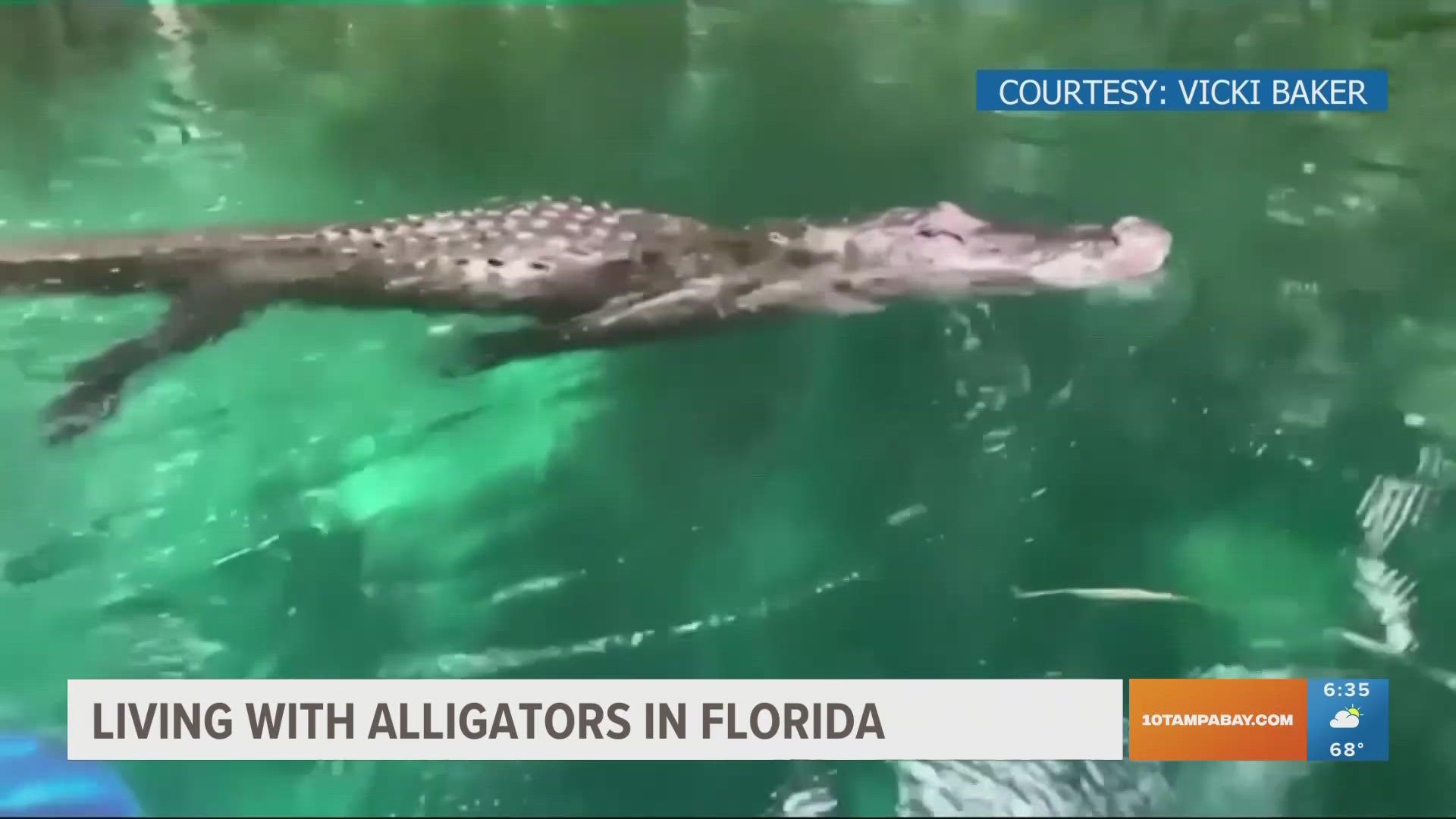ST. PETERSBURG, Fla. — Some things are just more common in Florida: beaches, sunshine, and... alligators.
While Florida is known as the Sunshine State, it's also home to many alligators. An estimated 1.25 million alligators live in the state among the 5 million across the southeastern United States, according to Defenders of Wildlife.
Based on that number, alligators can be found anywhere there is water. That includes lakes, ponds, rivers, marshes, swamps and man-made canals. In fact, alligators are found in all 67 Florida counties, Florida Fish and Wildlife Conservation Commission says.
Basic tips to abide by while living among alligators and crocodiles in Florida include: never feed a gator, keep your distance if you see one, swim only in designated swimming areas during daylight hours and keep pets on a leash away from the water.
Diet of an alligator
All alligator's diets depend on their size and what's available to eat, according to the University of Florida Institute of Food and Agriculture. This means they could eat, "anything including fish, frogs, birds, turtles, insects, snakes, small mammals, other alligators, white-tailed deer, wild hogs, and sometimes people's pets."
Did you know alligators typically swallow their meal whole? When its prey is too small to swallow whole, they stash its kill underwater, pinning it under a submerged log or anywhere it can be wedged for safekeeping, UF IFAS says.
How an alligator moves
There's a common myth that says running zigzag will help you escape an alligator. However, UF IFAS said that is a common misconception.
"First, it is rare for an alligator to pursue a human because humans are too large to be suitable prey," the experts say. "However, if an alligator does make an aggressive charge, run fast and straight (away from the alligator, of course)."
Alligators and crocs have extensive modifications that allow them to both swim in the water and walk on land. Their strong tail helps them move through the water and their shoulders, pelvis and spine allow them to move pretty quickly on land.
"The speed at which alligators can move makes them potentially dangerous in water and on land," UF IFAS reports.
Mating season
Alligators reproduce from mid-April through May. During that time, it's important for humans to avoid contact with alligators and their nests. Gator pairing to mate includes a little romance. It includes pairing up, swimming together, touching snouts and blowing bubbles.
"Females stay near the nest during incubation and actively defend it from predators like raccoons," according to a report from UF IFAS. "Females may also be aggressive toward humans, often hissing and charging at intruders, so alligator nests should never be approached."
How to spot the difference
The difference between alligators and crocodiles can be observed in the head shape and color, FWC says.
Alligators have a broad, round snout with no lower teeth visible when their jaw is closed. The American crocodile has a narrow snout and the fourth tooth of the lower jaw shows when the jaw is closed.
Adult alligators are primarily dark gray in color with a lighter color underside. Crocodiles are a brownish-gray color and are typically paler colored than gators.
If you're ever concerned about an alligator, call FWC's toll-free Nuisance Alligator Hotline at 866-392-4286.

